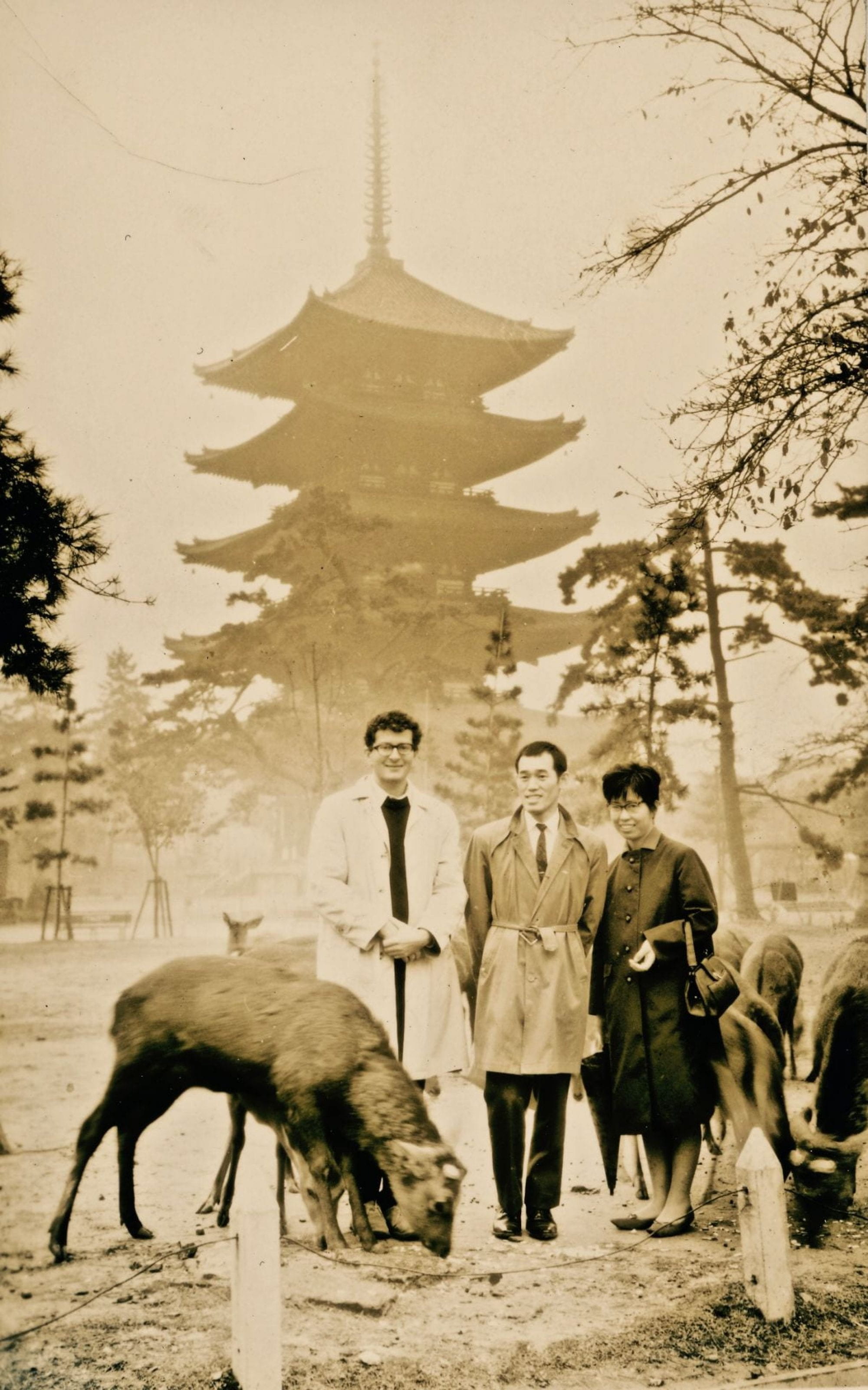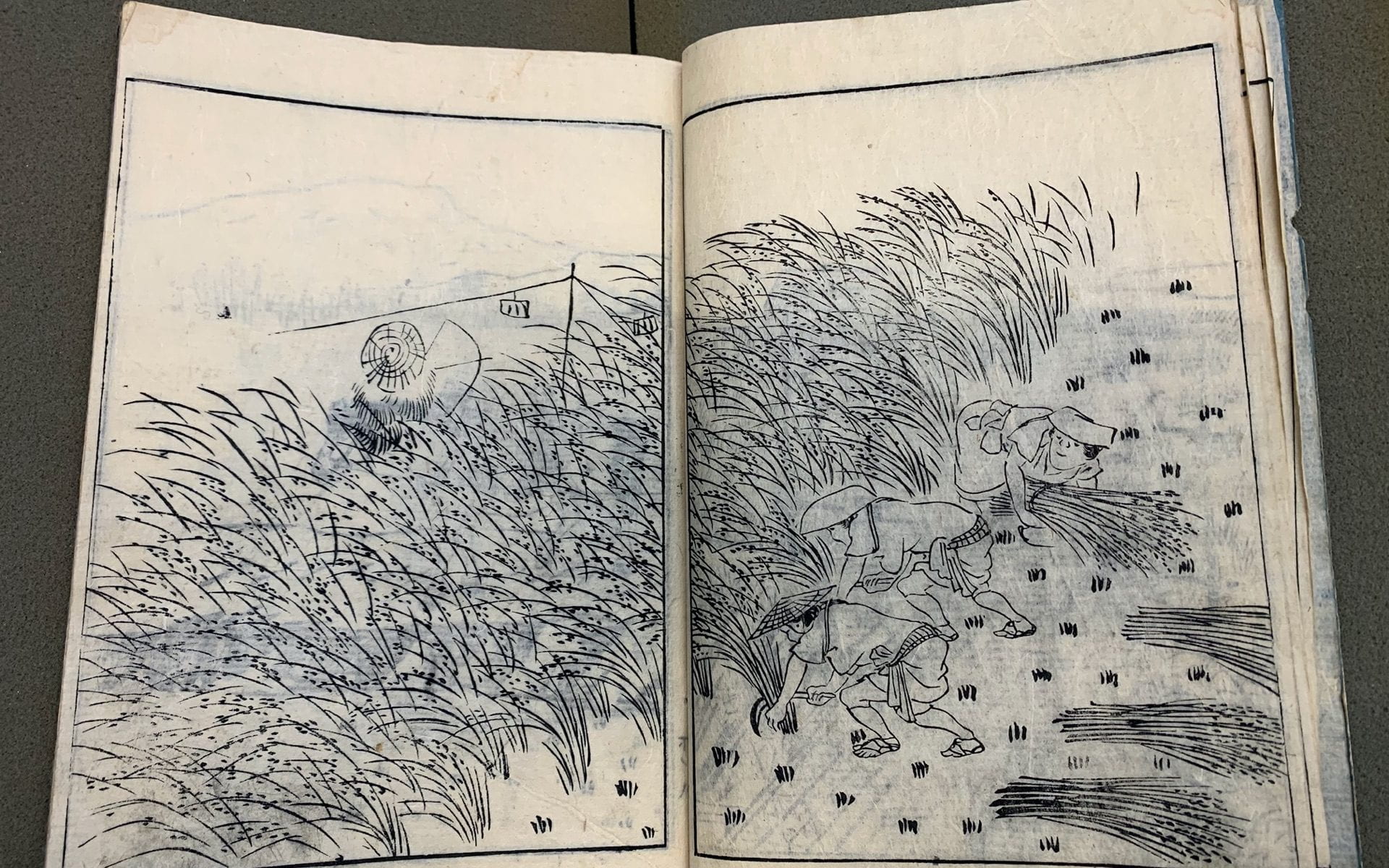
Artist: Yamaguchi Soken 山口素絢 (1759 – 1818)
Title: Yamato jinbutsu gafu kōhen 倭人物画譜後編 (Album of Japanese People in Painting, 2nd Part )
Date: 11th month, 1804 (Bunka 1)
Description: 3 volumes
Medium: Woodblock printed; ink on paper; paper cover
Dimensions: 18 cm x 26 cm
Publisher: Hishiya Magobē 菱屋孫兵衛
Gift of Mr. Arthur Tress
Object Number: Box 8, Item 14 https://franklin.library.upenn.edu/catalog/FRANKLIN_9977502576003681
Yamato jinbutsu gafu kōhen is the 3-volume sequel to Yamato jinbutsu gafu (Tress Collection: Box 8, Item 12), which was published in 1799. The series features daily life scenes in Edo-period Japan, illustrated by Yamaguchi Soken (1759 – 1818), and includes people of different occupations and social classes. The first images of each volume of Yamato jinbutsu gafu kōhen are illustrations in the style of Otsu-e, a folk-art tradition which was flourished in Otsu, on the Tōkaidō road. The first featured image here is the first illustration of the first volume; here, a man with a hunting falcon is represented in print as thought painted with rough and quick brushstrokes. It is likely that Soken selected these Otsu-e to pay tribute to this painting tradition. Scenes of people working are featured throughout this book. In the third volume, the complete process of rice harvesting is depicted, from planting in the early spring to harvesting in the late fall, as may be seen in the selected illustration.

Yamaguchi Soken was actively involved in publishing illustrated books, especially painting albums. He is known to have studied with Maruyama Ōkyo (1733-1795). According to the preface of Yamato jinbutsu gafu, written by Akisato Ritō, Soken was the second son of a kimono merchant in Kyoto. This book, Yamato jinbutsu gafu kōhen, was published in 1804, and he followed this up with Soken gafu sōka no bu (Tress Collection: Box 40, Item 15) in 1806, a title fully devoted to plants. In 1818, his pictures designed for an album of landscapes, Soken sansui gafu (Tress Collection: Box 56, Item 16), was published. Many of Soken’s paintings were collected in his lifetime and many survive in museum collections, but in eighteenth-century Japan, it is likely that his painting albums reached a greater readership. His printed books remained of interest to later artists, as may be seen in Kawanabe Kyōsai’s (1831-1889) Kyōsai gadan (Tress Collection: Box 39, Item 1) where Kyōsai shows a design based upon Soken’s Soken gafu sōka no bu.
Other copies of this book are in Freer Gallery of Art, and Metropolitan Museum of Art, Museum of Fine Art in Boston, and Waseda University
Selected Reading
Hillier, Jack. 1987. The art of the Japanese book. London: Wilson for Sotheby’s Publications. 532-537
Keyes, Roger S. 2007. Ehon: the artist and the book in Japan. New York, NY: New York Public Library. 140-141
Posted by Tim Zhang, 2019

